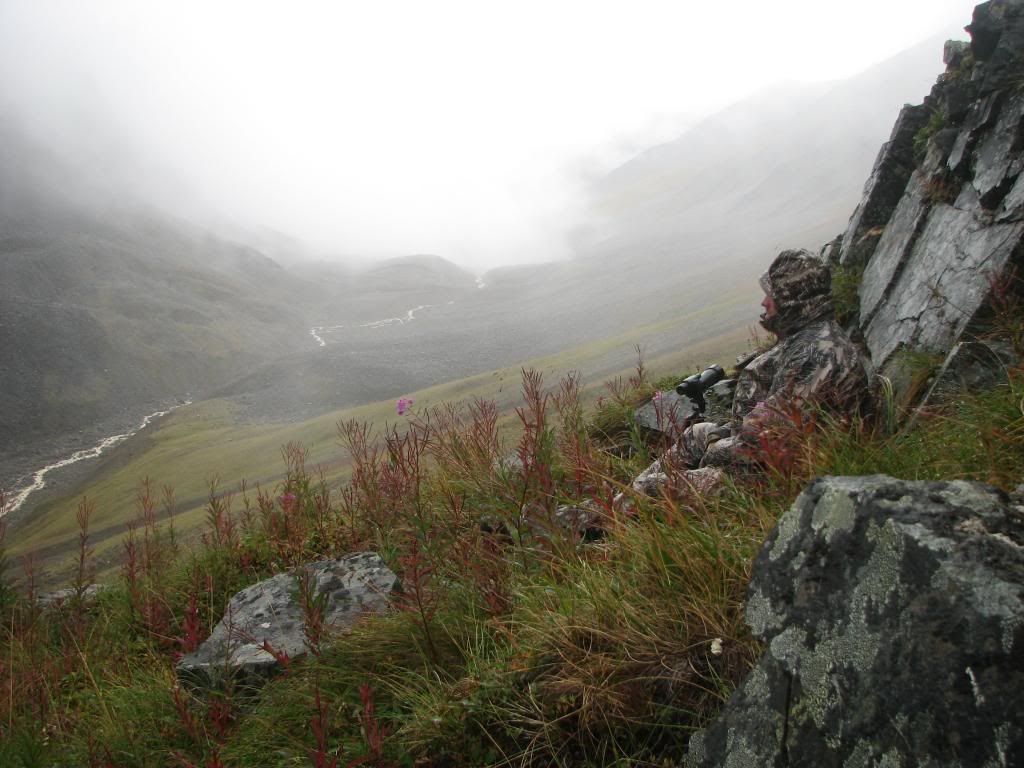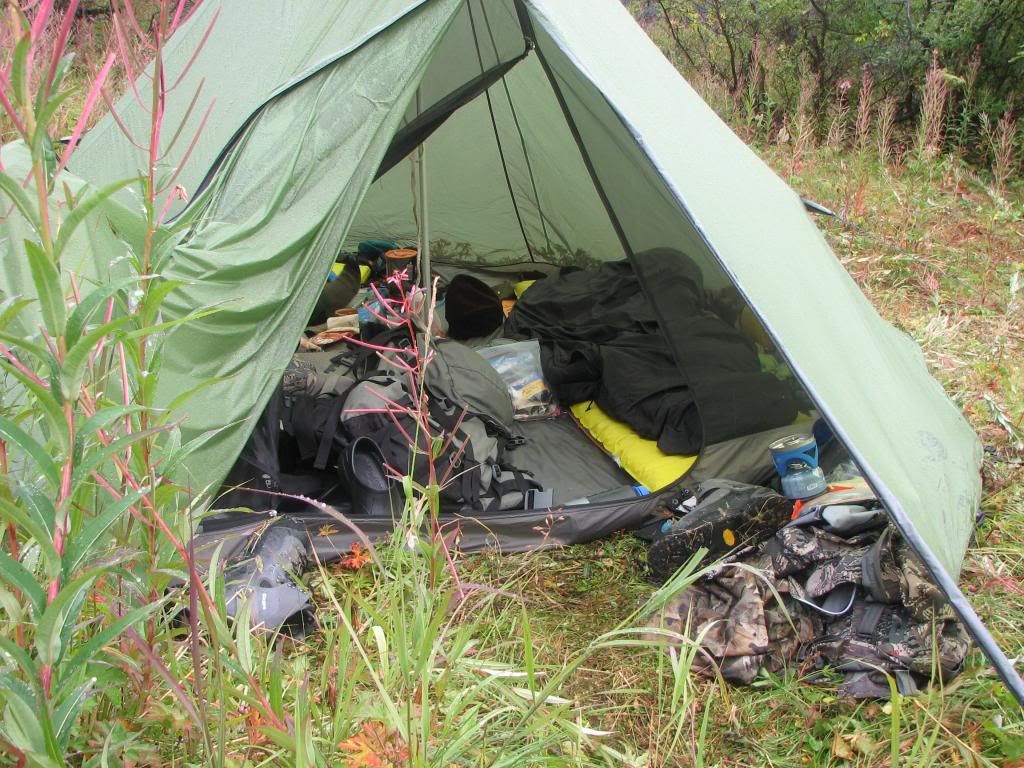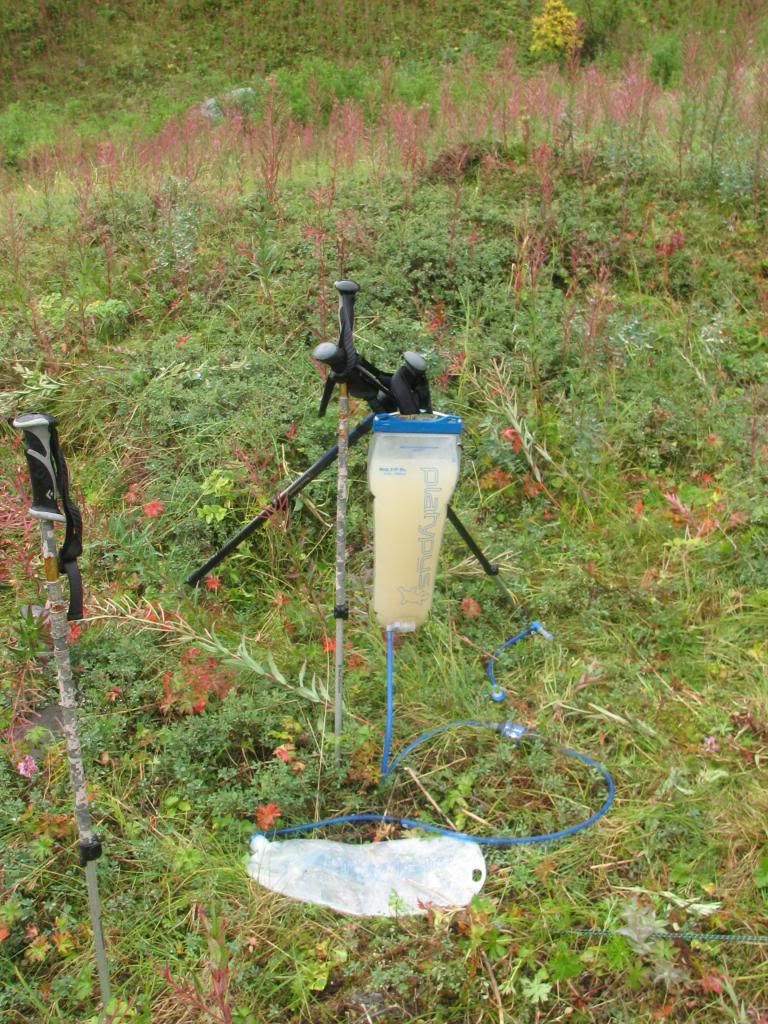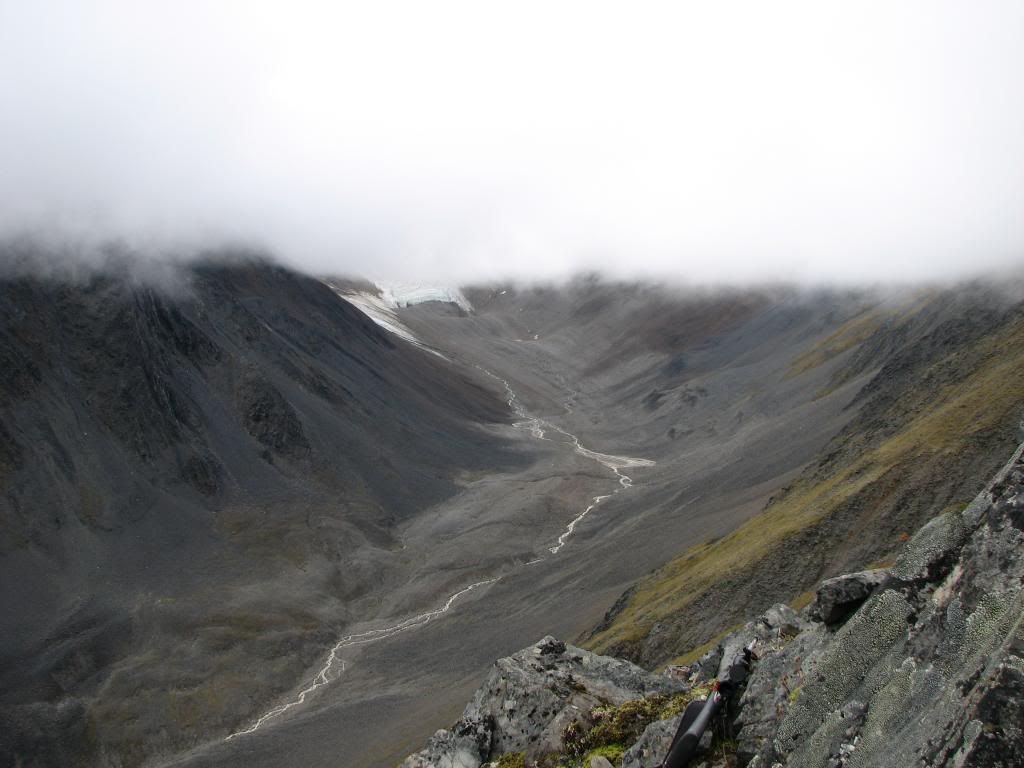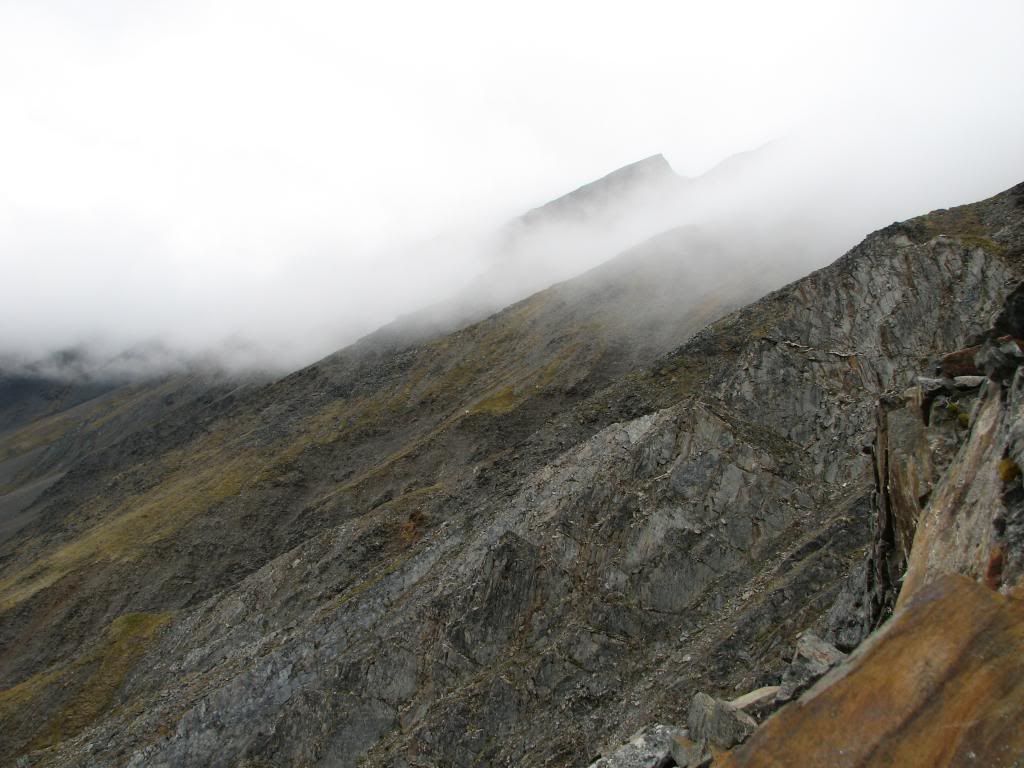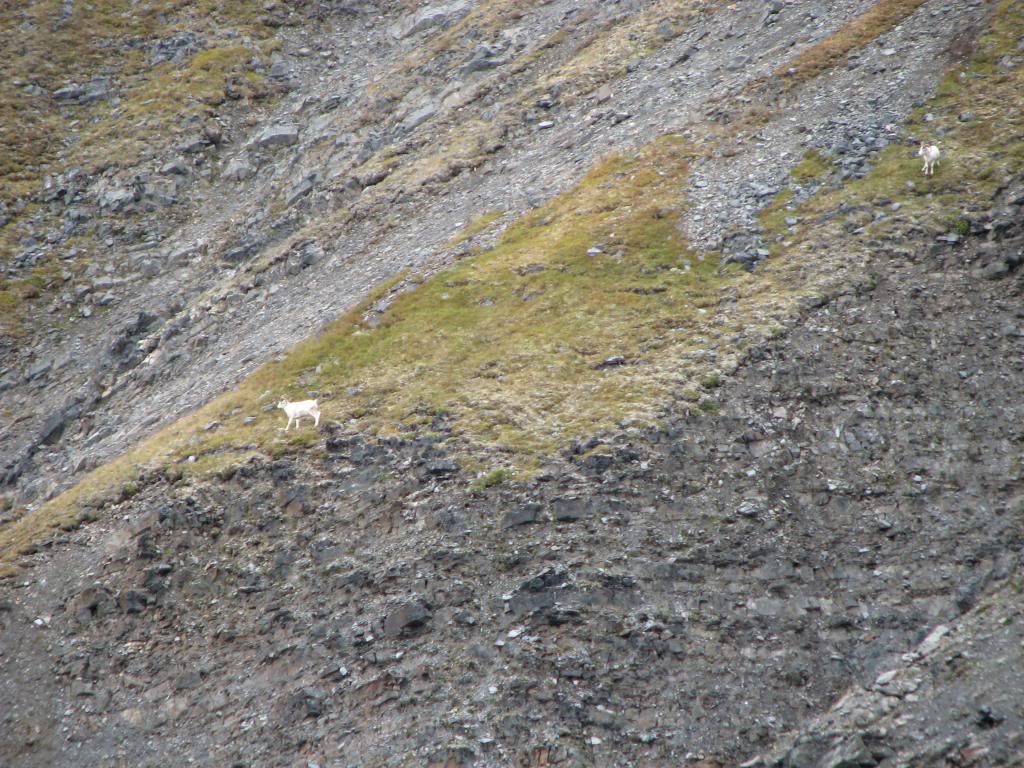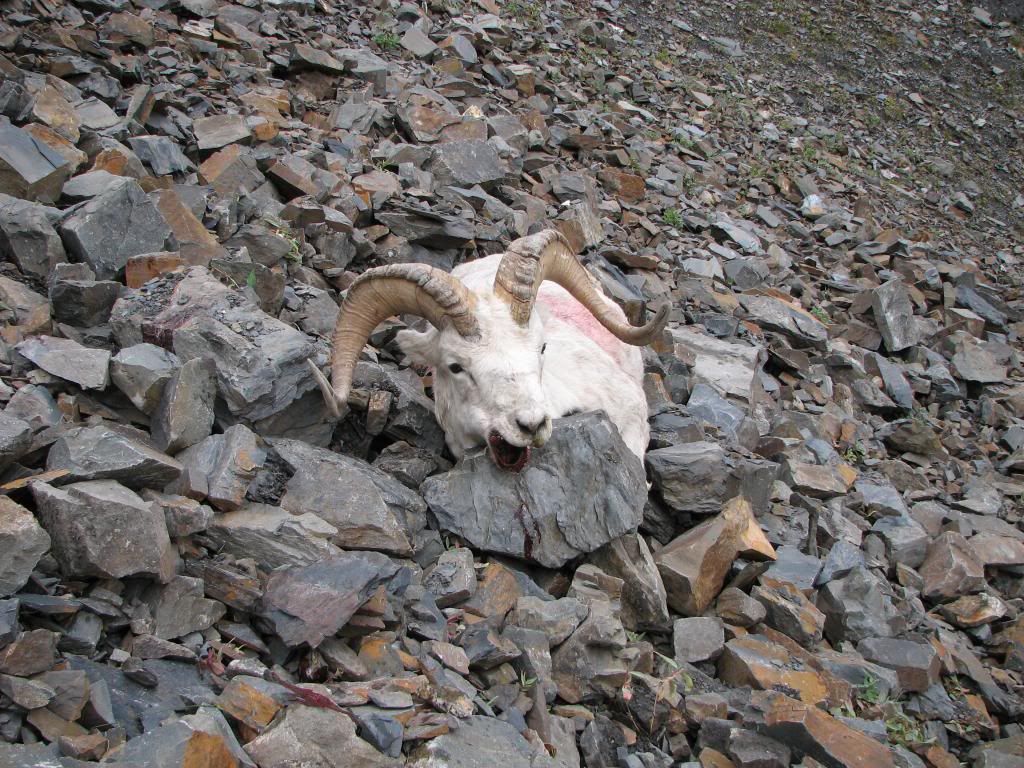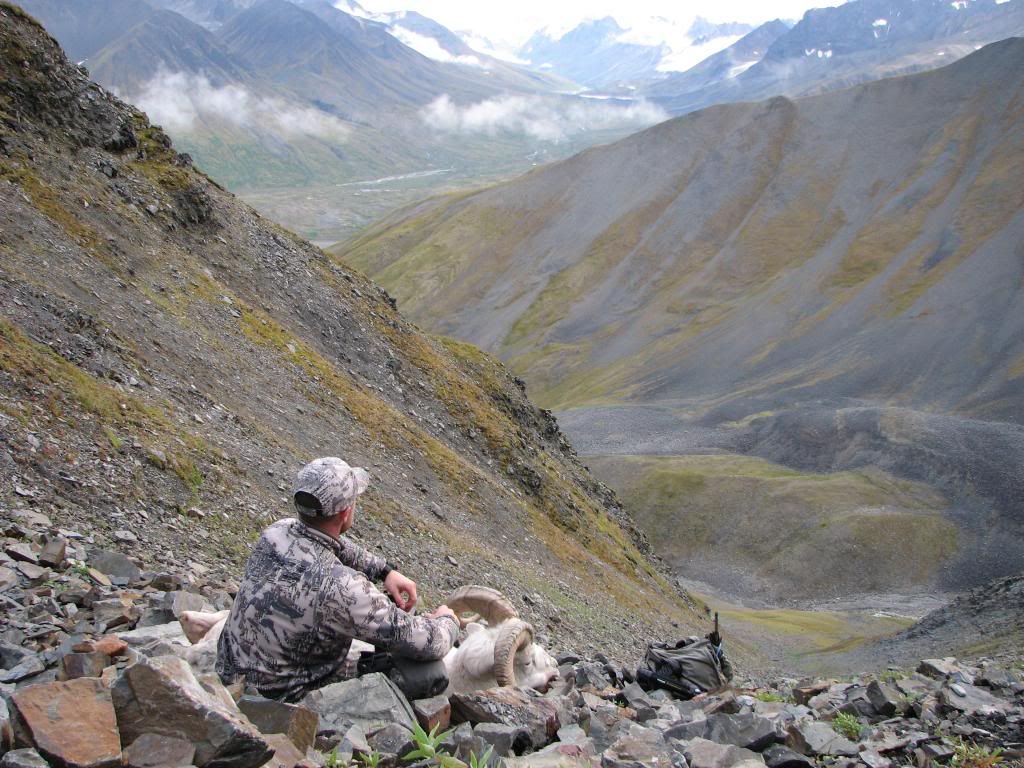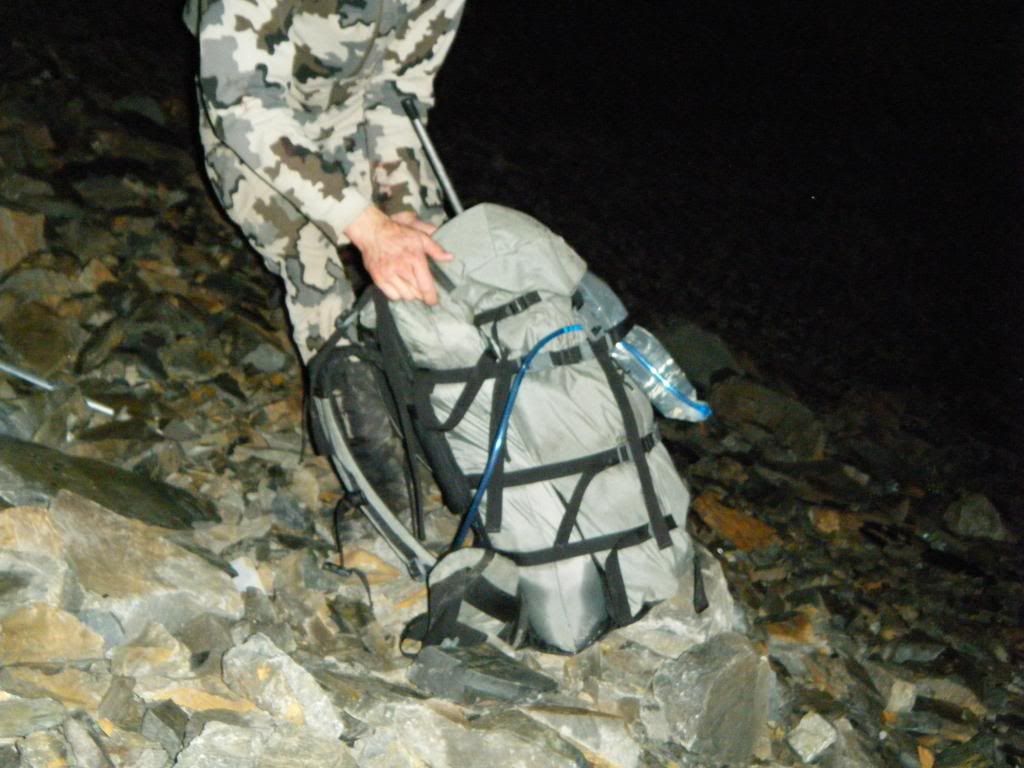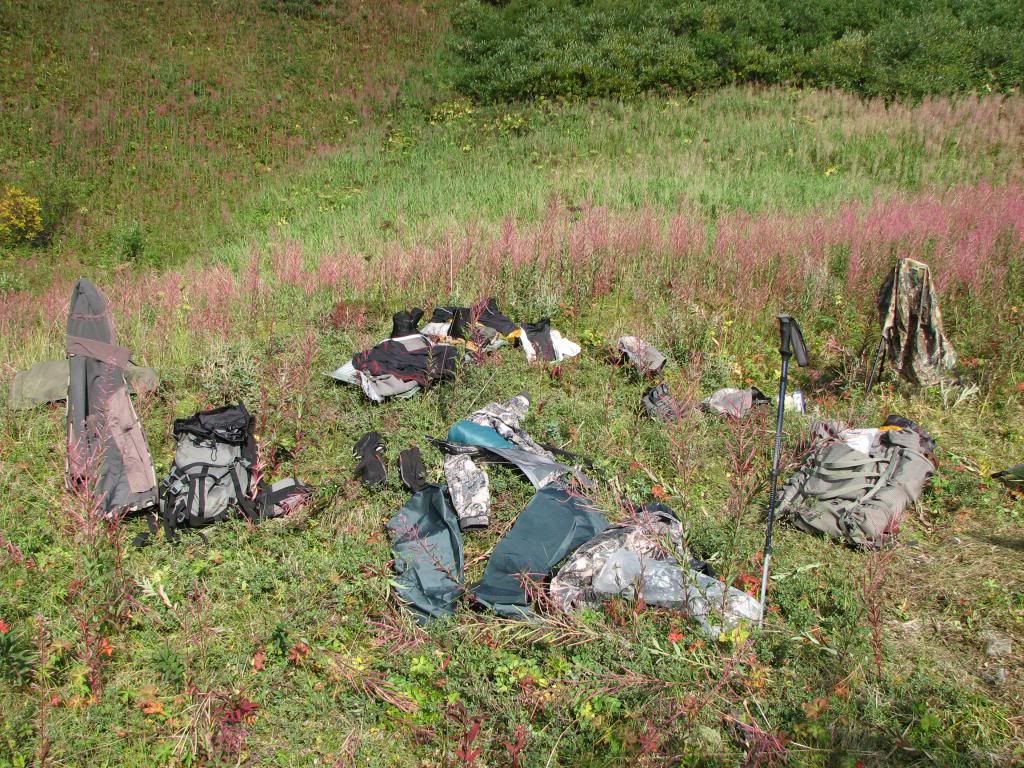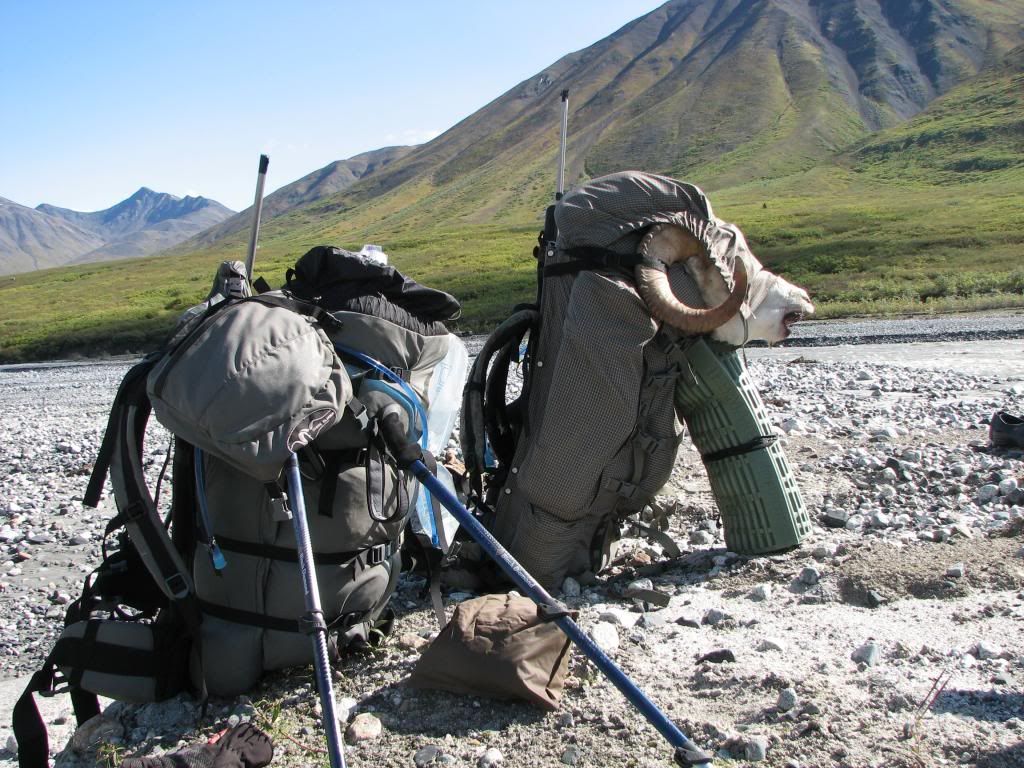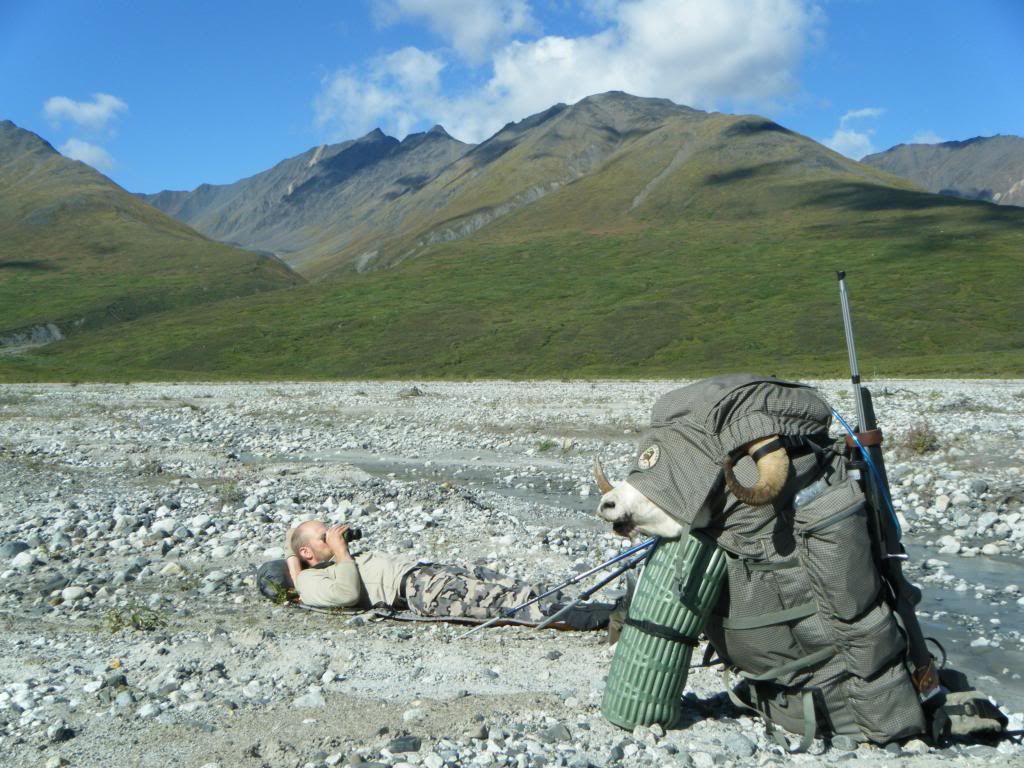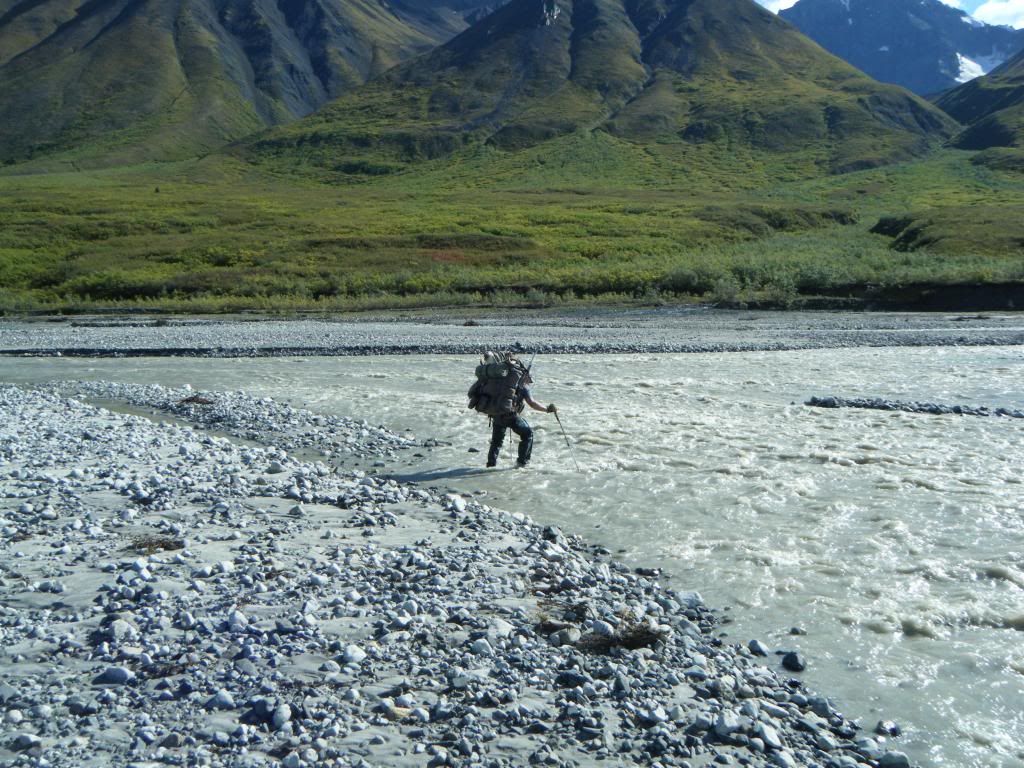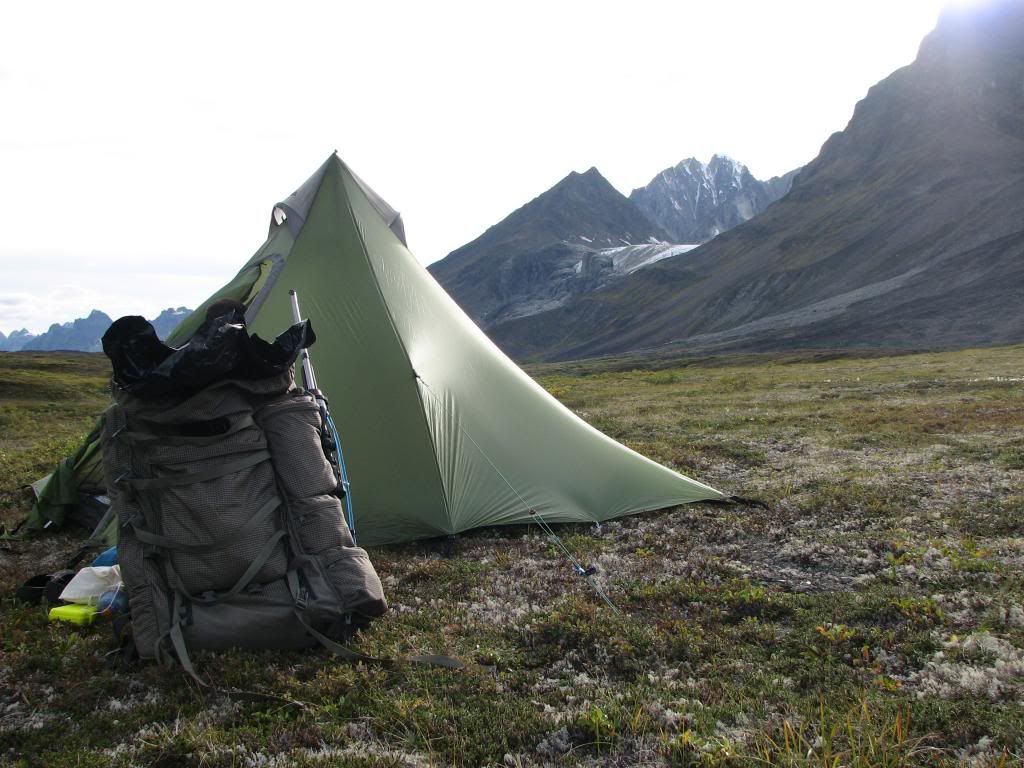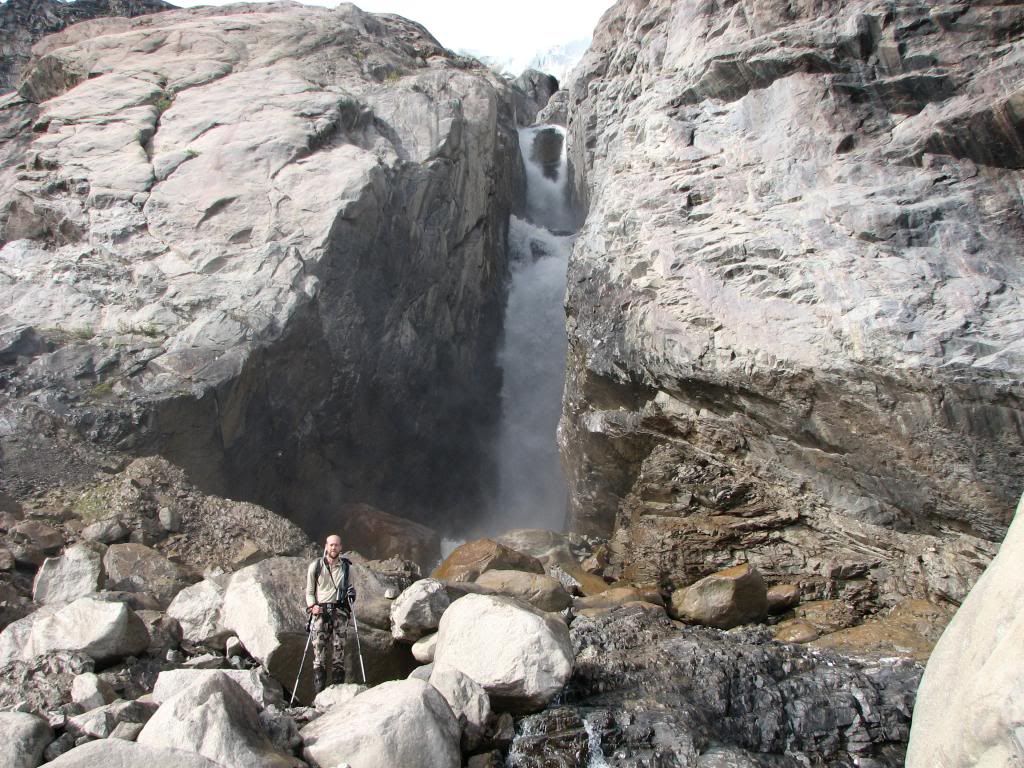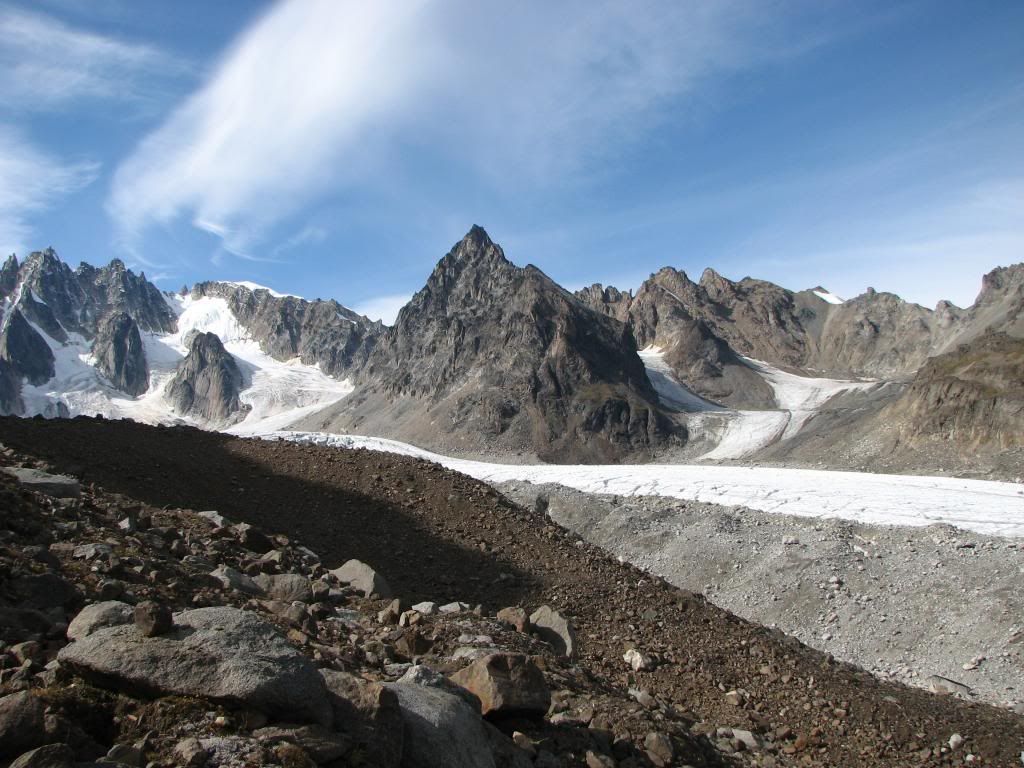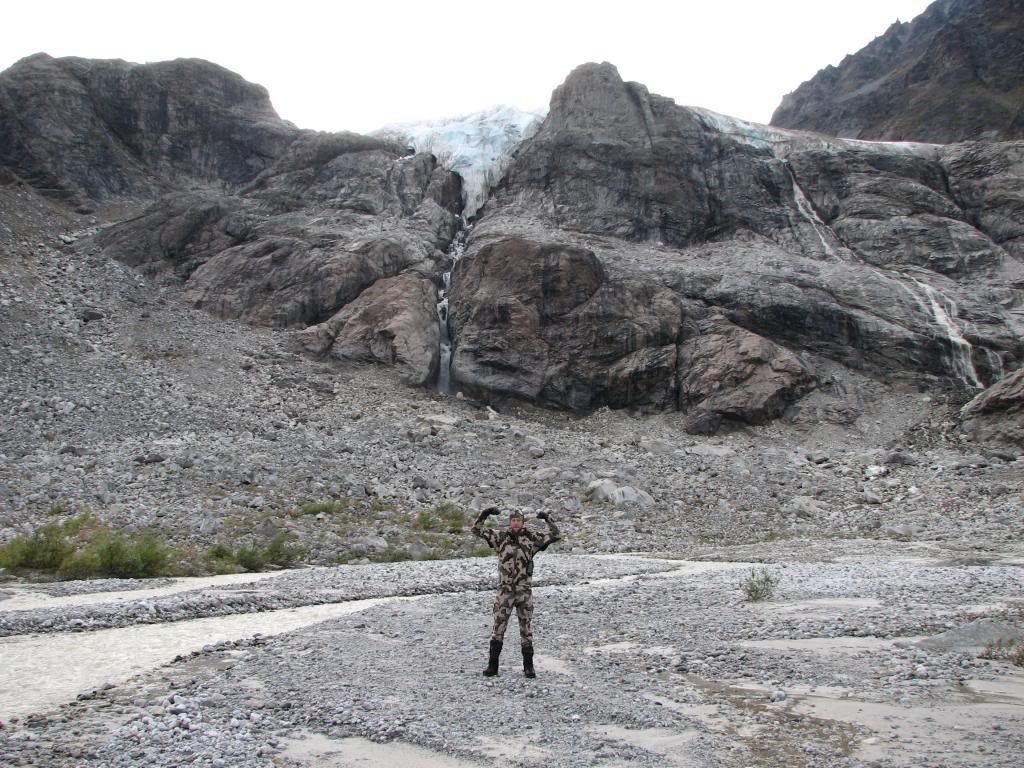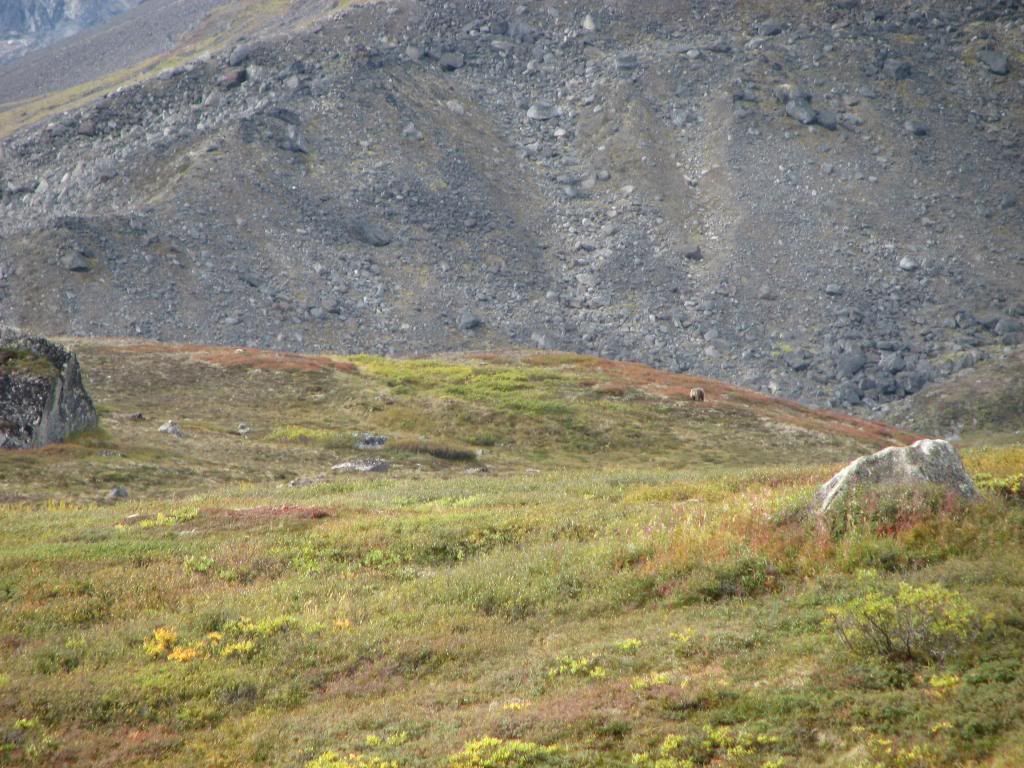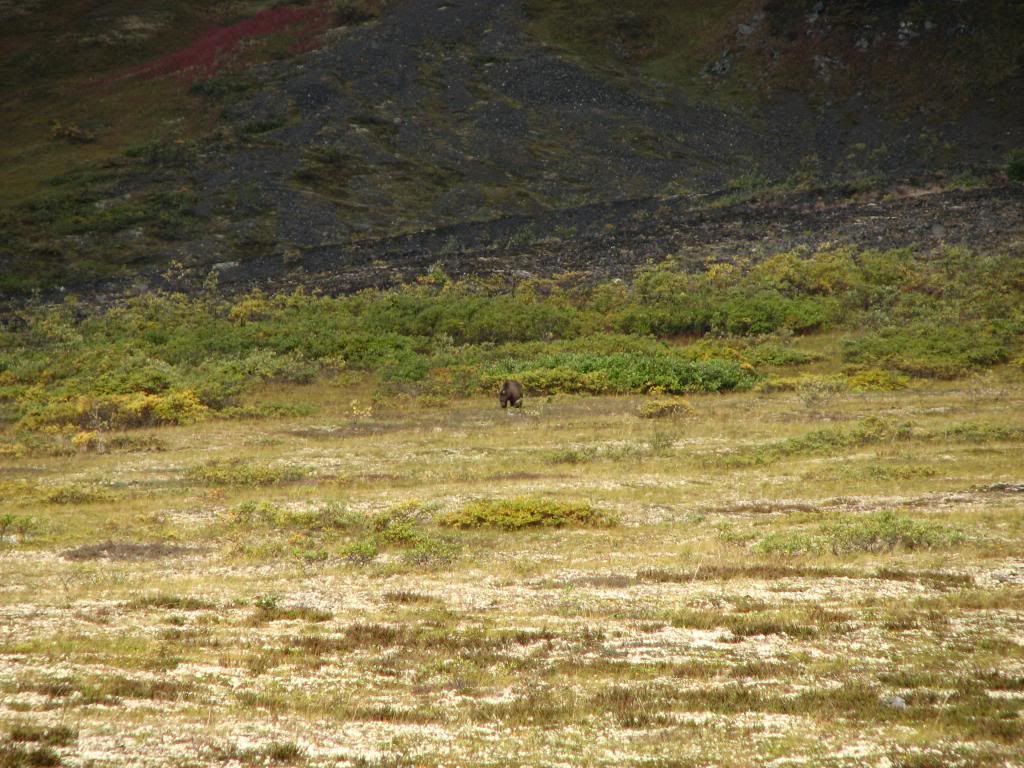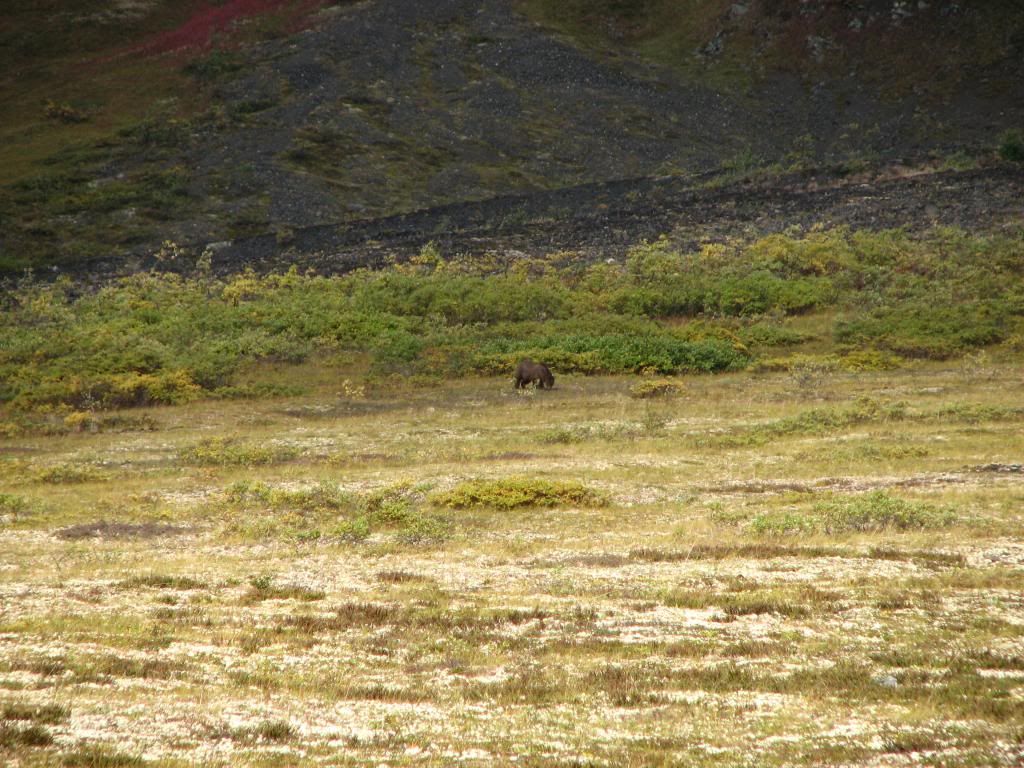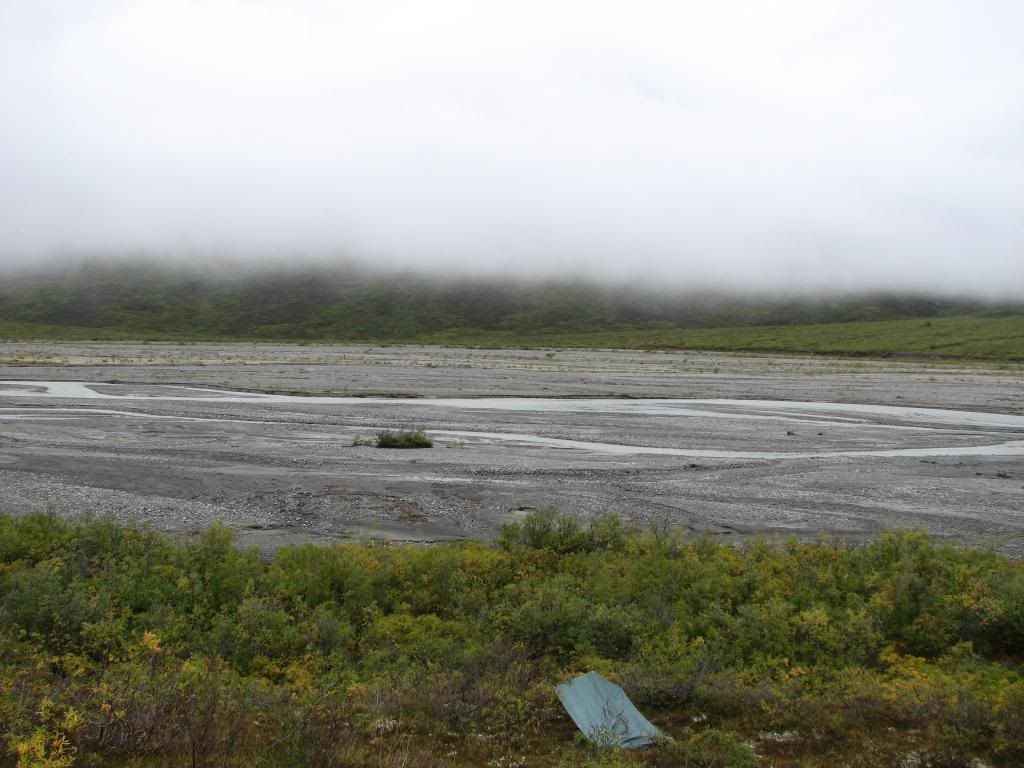I wrote it up in detail last year, and wanted to continue the tradition. Warning: this is long, and quite possibly boring. 
Day 1
Fog and clouds had kept the pilot from getting Josh into the valley we were headed for. The pilot dropped Josh off with the satellite phone and told him to call when the weather broke. He was about a 45 minute cub flight out. We loaded my gear into the plane and refueled so we would be ready to go. We also loaded 3 5-gallon gas cans of avgas in the belly pod. That was when I realized just how far off the beaten path we were going.
Josh called a few hours later to say that the ceiling was lifting and we should probably make a break for it. I crammed myself in the back seat of the cub, and we took off. It was probably around 1:00 PM and we had a long flight ahead of us. The supercub is actually pretty comfortable once you are in it, and I love flying, especially with a pilot that knows what he is doing. We climbed up to the height of the upcoming pass plus about 20 feet. This guy knows what he is doing, but it is just plain spooky flying along, looking ahead and trying to figure out if we are going to clear the ground, which is rising…
We flew past glaciers and lakes, over spruce forest, tundra, muskeg, and several rivers that will remain nameless… We stopped at one point on a nice gravel bar and cached the fuel, then continued on to our destination. The overall flight time must have been close to an hour and 20 minutes. When we got to the spot, we circled for a bit, and looked for other camps, and had a discussion about which side of the river we wanted to be on. The pilot picked out a “gravel” bar, which means that it had rocks smaller than 1 foot in diameter for the most part. We did a low pass to take a close look, and then landed. We had about a 10-15mph headwind, and didn’t even use the whole gravel bar to land. We walked the gravel bar and cleaned some driftwood out of it to improve it slightly. Then the pilot was off to pick up Josh. I moved all my gear to the riverbank and scouted a couple of spots for the tent. Then I glassed for a bit, found a couple of caribou (didn’t have a harvest ticket – dumb!) but no sheep. I cleaned up the gravel bar a bit more and it was actually looking pretty good.
We stopped at one point on a nice gravel bar and cached the fuel, then continued on to our destination. The overall flight time must have been close to an hour and 20 minutes. When we got to the spot, we circled for a bit, and looked for other camps, and had a discussion about which side of the river we wanted to be on. The pilot picked out a “gravel” bar, which means that it had rocks smaller than 1 foot in diameter for the most part. We did a low pass to take a close look, and then landed. We had about a 10-15mph headwind, and didn’t even use the whole gravel bar to land. We walked the gravel bar and cleaned some driftwood out of it to improve it slightly. Then the pilot was off to pick up Josh. I moved all my gear to the riverbank and scouted a couple of spots for the tent. Then I glassed for a bit, found a couple of caribou (didn’t have a harvest ticket – dumb!) but no sheep. I cleaned up the gravel bar a bit more and it was actually looking pretty good.
When the pilot came back with Josh, he used the whole runway. I was a little worried that he was going to run long and end up in the river, but he did just fine. I hadn’t noticed, but the wind was completely gone, and not having that headwind made a big difference. We got Josh’s gear unloaded, the pilot took off, and we set up base camp. We glassed for a bit, found some sheep, hatched a plan for the next morning, cooked some dinner, and went to bed.
Day 2
We made a mistake last year on our first spike camp. We had gone high right away, and climbed through alders for most of a day while only bringing 3 days of food. The next day we were weathered in (fog and rain), which meant that we climbed down the following day without really doing much hunting. I didn’t want to do that again, but our proposed spike camp was only about 1-1.5 miles away and we decided to just do a day trip, staying “fast and light” and try to kill one of the rams we had seen (assuming they were really rams… we were not 100% in the spotter). We hiked down to the river, which appeared to be only about 1-1.5 feet deep. We tried to cross in a couple of spots, but as usual with glacial rivers, it was deeper than it looked. We made it across, although I splashed water over the tops of my glacier socks a bit. I had taken my socks off and was just wearing glacier socks (basically a lw nylon hip boot) with crocs. No big deal, my boots and socks were still dry, although my feet were freezing. We moved on across the river bottom and up a drainage that would take us to where the sheep had been the night before. As we rounded a bend in the canyon, we spotted the sheep, about 1-1.5 miles away. They were up high, just below the cloud cover. We verified that they were rams, and we could see 3, with one being only a 3ish year old.
We decided to backtrack a bit and go up a side cut in the main canyon that would put us on the same hillside as the sheep. It was a good plan, and we climbed up out of sight, making slow progress toward the rams. The hillside they were on had a cut every couple hundred yards where water coming off the mountain had carved a small canyon. Down low these are just ditches in the shale, and we were not too concerned. We couldn’t see up high, which should have concerned us. Up high these cuts were loose rock and a couple hundred feet deep. We made slow but steady progress, crossing one cut after another and staying mostly out of sight. Some of these cuts took 40 minutes to cross, and there were a couple of minor spills along the way. Eventually we got to a point where we either had to follow the cut out to the bottom or climb up into the fog. We went high, and made it to a spot where we should have been in shooting distance from the rams. We didn’t want to push any farther in the fog, so we dropped a bit of altitude and found a decent place where we could drop packs. We waited for the fog to lift, and when it did we were about 1000 yards from the rams. At some point in the day it had started raining, and we were in rain gear, which was making us sweat. We had a decent perch, and there wasn’t much we could do to get closer without making a lot of noise rolling rocks, so we hunkered and glassed hard. Josh was in the spotting scope, and I was glassing with binos. Fog would lift, we’d glass, and then it would roll back in, and we’d wait. In one of the “clear” times, I saw another sheep about a mile up the canyon from the pack of 3. I tried to get the scope on it, but it fogged back in. I saw him two more times, and I was betting he was the biggest ram of the bunch. He was only visible for about 45 seconds, about every 15-20 minutes. One of the other 3 looked to be legal, but we could never get a 100% confirmation. He was an odd ram with wide flare and extremely tight curl on his left side.
We watched the clock and eventually hit our “bail” time. We backtracked to the first deep cut and followed it down the hill. Everything was going great until we got to the top of the waterfall… Luckily we were able to climb out of that cut and descend on a steep grassy slope. We walked back to the creek, and out of the canyon. When we got to the main river, we looked for a better place to cross. I let Josh try a couple of crossings, and they quickly got too deep. We followed the river downstream eventually getting to our original crossing point. I decided to take the lead and give Josh a break. We were on the channel side of the river at that point, and it was where I had taken water on that morning. I waded in, and started to lose my footing. I took another step to steady myself, and that was deep enough that water went over the top of my glacier sock, filling it. The second sock filled just as fast. Bad news. The water was deep and fast - I was nuts deep in a fast, glacial river and I had two hip boots full of water. I honestly thought I was going in. I leaned on the trekking poles, and marched for a gravel bar about 25 feet away. As soon as I lifted my feet, both crocs popped off, propelled by the now full glacier socks. I made the gravel bar with my feet screaming, and much heavier than I went in. Cold water, and nothing but nylon between me and river rock wasn’t working for me. The glacier socks were snapped around my belt, and even when completely out of the water, they never popped off. I popped the snaps, which took some doing, and drained several gallons of water on the gravel bar.
As soon as Josh saw my crocs pop off and head down river, he headed downstream, fully expecting to have to pluck me out of the drink. He made the gravel bar after I did, and had taken some water also, although not nearly as much. Our feet were purple, and I was getting pretty serious shivers. We put the glacier socks back on and crossed a couple more smaller braids of the river, wanting to get to the tent ASAP. After we were through the deep braids, we put socks and boots back on and headed for the tent. I hung up my pants and glacier socks (all that got wet) to dry, got into long johns, puffy pants, hot socks, and then into my sleeping bag. I warmed up pretty fast, but I was not looking forward to the crossing the river again, which was the plan for the next day. It turned out that the river had come up about 6 inches while we were on our day hunt. Lesson learned: Glacial bowls can collect a lot of rain water in a short amount of time, and that, combined with melt, will change water levels quickly. Mountain house, shot of whisky, and bedtime.
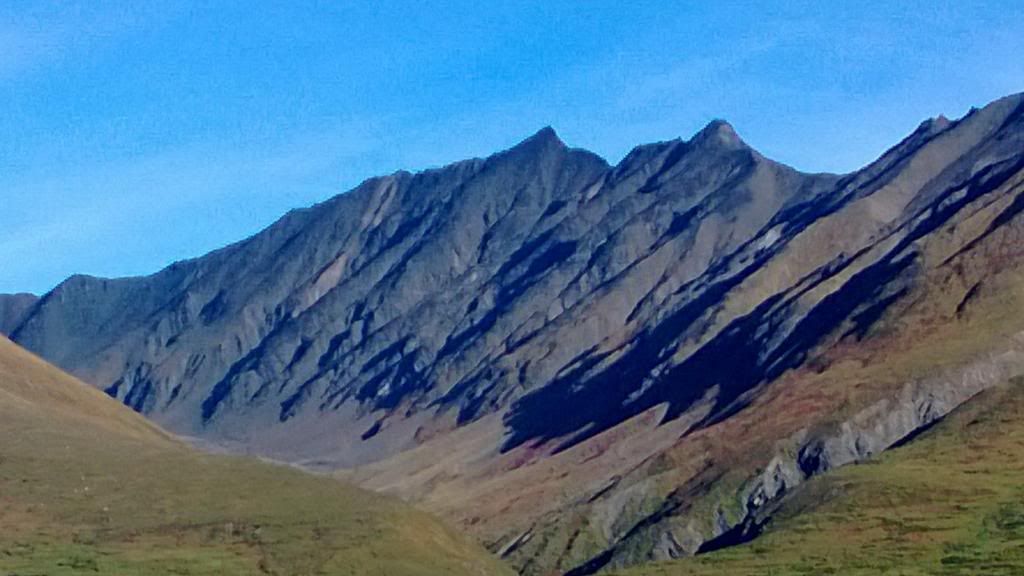
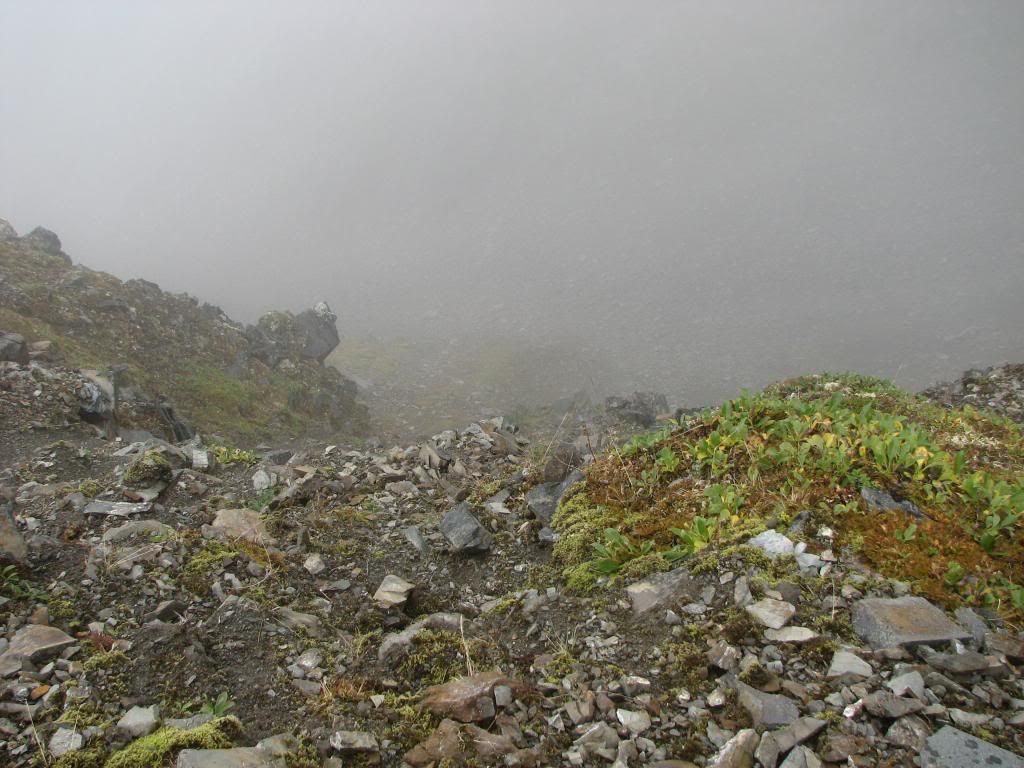
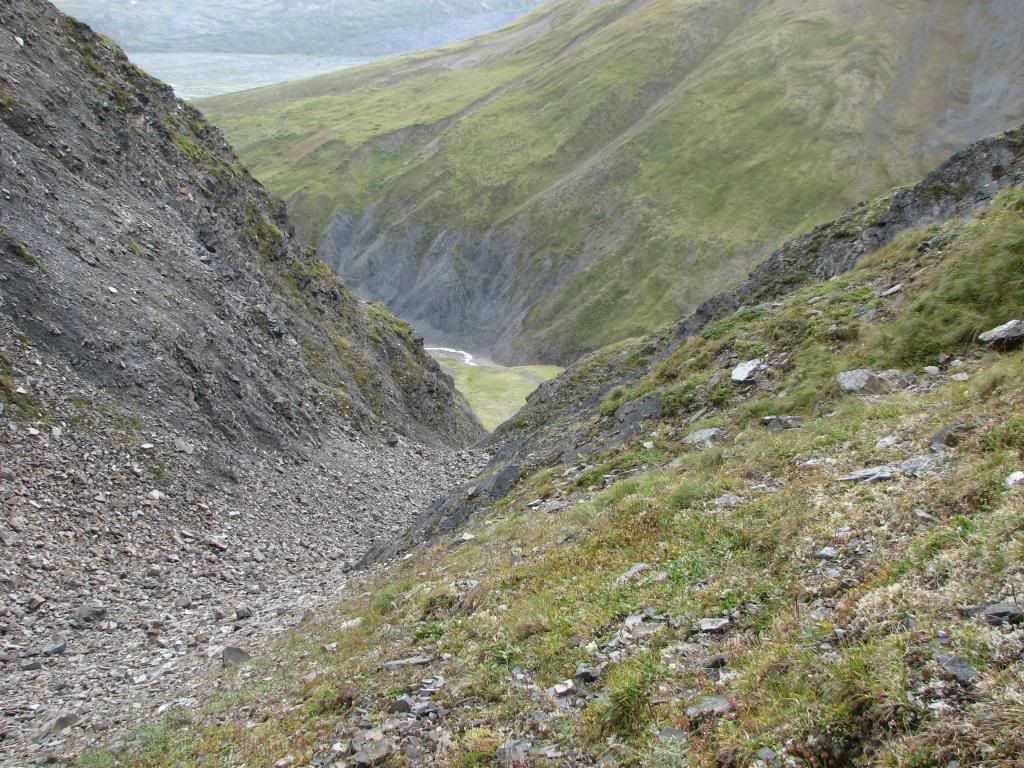
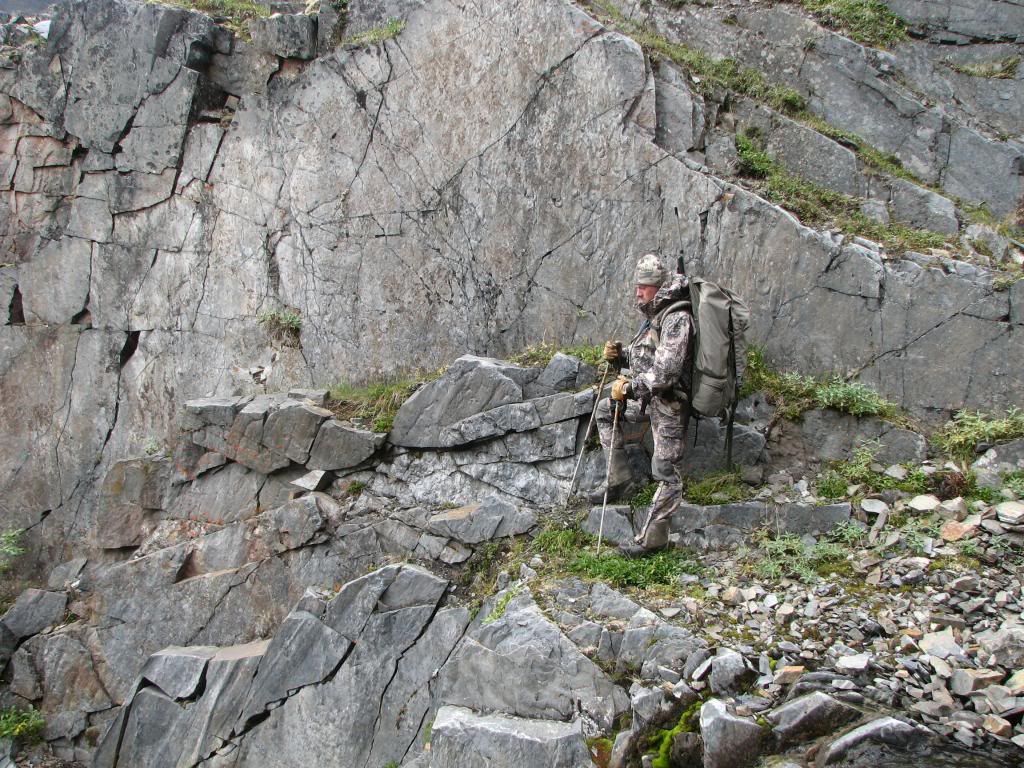
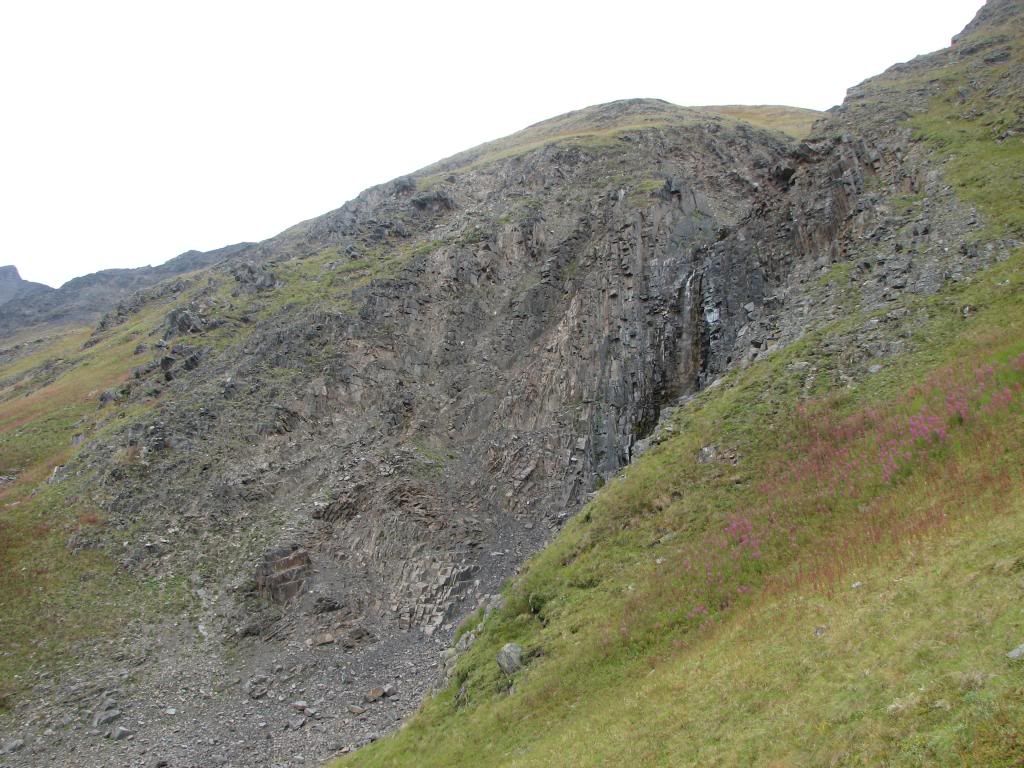
Day 1
Fog and clouds had kept the pilot from getting Josh into the valley we were headed for. The pilot dropped Josh off with the satellite phone and told him to call when the weather broke. He was about a 45 minute cub flight out. We loaded my gear into the plane and refueled so we would be ready to go. We also loaded 3 5-gallon gas cans of avgas in the belly pod. That was when I realized just how far off the beaten path we were going.
Josh called a few hours later to say that the ceiling was lifting and we should probably make a break for it. I crammed myself in the back seat of the cub, and we took off. It was probably around 1:00 PM and we had a long flight ahead of us. The supercub is actually pretty comfortable once you are in it, and I love flying, especially with a pilot that knows what he is doing. We climbed up to the height of the upcoming pass plus about 20 feet. This guy knows what he is doing, but it is just plain spooky flying along, looking ahead and trying to figure out if we are going to clear the ground, which is rising…
We flew past glaciers and lakes, over spruce forest, tundra, muskeg, and several rivers that will remain nameless…
When the pilot came back with Josh, he used the whole runway. I was a little worried that he was going to run long and end up in the river, but he did just fine. I hadn’t noticed, but the wind was completely gone, and not having that headwind made a big difference. We got Josh’s gear unloaded, the pilot took off, and we set up base camp. We glassed for a bit, found some sheep, hatched a plan for the next morning, cooked some dinner, and went to bed.
Day 2
We made a mistake last year on our first spike camp. We had gone high right away, and climbed through alders for most of a day while only bringing 3 days of food. The next day we were weathered in (fog and rain), which meant that we climbed down the following day without really doing much hunting. I didn’t want to do that again, but our proposed spike camp was only about 1-1.5 miles away and we decided to just do a day trip, staying “fast and light” and try to kill one of the rams we had seen (assuming they were really rams… we were not 100% in the spotter). We hiked down to the river, which appeared to be only about 1-1.5 feet deep. We tried to cross in a couple of spots, but as usual with glacial rivers, it was deeper than it looked. We made it across, although I splashed water over the tops of my glacier socks a bit. I had taken my socks off and was just wearing glacier socks (basically a lw nylon hip boot) with crocs. No big deal, my boots and socks were still dry, although my feet were freezing. We moved on across the river bottom and up a drainage that would take us to where the sheep had been the night before. As we rounded a bend in the canyon, we spotted the sheep, about 1-1.5 miles away. They were up high, just below the cloud cover. We verified that they were rams, and we could see 3, with one being only a 3ish year old.
We decided to backtrack a bit and go up a side cut in the main canyon that would put us on the same hillside as the sheep. It was a good plan, and we climbed up out of sight, making slow progress toward the rams. The hillside they were on had a cut every couple hundred yards where water coming off the mountain had carved a small canyon. Down low these are just ditches in the shale, and we were not too concerned. We couldn’t see up high, which should have concerned us. Up high these cuts were loose rock and a couple hundred feet deep. We made slow but steady progress, crossing one cut after another and staying mostly out of sight. Some of these cuts took 40 minutes to cross, and there were a couple of minor spills along the way. Eventually we got to a point where we either had to follow the cut out to the bottom or climb up into the fog. We went high, and made it to a spot where we should have been in shooting distance from the rams. We didn’t want to push any farther in the fog, so we dropped a bit of altitude and found a decent place where we could drop packs. We waited for the fog to lift, and when it did we were about 1000 yards from the rams. At some point in the day it had started raining, and we were in rain gear, which was making us sweat. We had a decent perch, and there wasn’t much we could do to get closer without making a lot of noise rolling rocks, so we hunkered and glassed hard. Josh was in the spotting scope, and I was glassing with binos. Fog would lift, we’d glass, and then it would roll back in, and we’d wait. In one of the “clear” times, I saw another sheep about a mile up the canyon from the pack of 3. I tried to get the scope on it, but it fogged back in. I saw him two more times, and I was betting he was the biggest ram of the bunch. He was only visible for about 45 seconds, about every 15-20 minutes. One of the other 3 looked to be legal, but we could never get a 100% confirmation. He was an odd ram with wide flare and extremely tight curl on his left side.
We watched the clock and eventually hit our “bail” time. We backtracked to the first deep cut and followed it down the hill. Everything was going great until we got to the top of the waterfall… Luckily we were able to climb out of that cut and descend on a steep grassy slope. We walked back to the creek, and out of the canyon. When we got to the main river, we looked for a better place to cross. I let Josh try a couple of crossings, and they quickly got too deep. We followed the river downstream eventually getting to our original crossing point. I decided to take the lead and give Josh a break. We were on the channel side of the river at that point, and it was where I had taken water on that morning. I waded in, and started to lose my footing. I took another step to steady myself, and that was deep enough that water went over the top of my glacier sock, filling it. The second sock filled just as fast. Bad news. The water was deep and fast - I was nuts deep in a fast, glacial river and I had two hip boots full of water. I honestly thought I was going in. I leaned on the trekking poles, and marched for a gravel bar about 25 feet away. As soon as I lifted my feet, both crocs popped off, propelled by the now full glacier socks. I made the gravel bar with my feet screaming, and much heavier than I went in. Cold water, and nothing but nylon between me and river rock wasn’t working for me. The glacier socks were snapped around my belt, and even when completely out of the water, they never popped off. I popped the snaps, which took some doing, and drained several gallons of water on the gravel bar.
As soon as Josh saw my crocs pop off and head down river, he headed downstream, fully expecting to have to pluck me out of the drink. He made the gravel bar after I did, and had taken some water also, although not nearly as much. Our feet were purple, and I was getting pretty serious shivers. We put the glacier socks back on and crossed a couple more smaller braids of the river, wanting to get to the tent ASAP. After we were through the deep braids, we put socks and boots back on and headed for the tent. I hung up my pants and glacier socks (all that got wet) to dry, got into long johns, puffy pants, hot socks, and then into my sleeping bag. I warmed up pretty fast, but I was not looking forward to the crossing the river again, which was the plan for the next day. It turned out that the river had come up about 6 inches while we were on our day hunt. Lesson learned: Glacial bowls can collect a lot of rain water in a short amount of time, and that, combined with melt, will change water levels quickly. Mountain house, shot of whisky, and bedtime.






